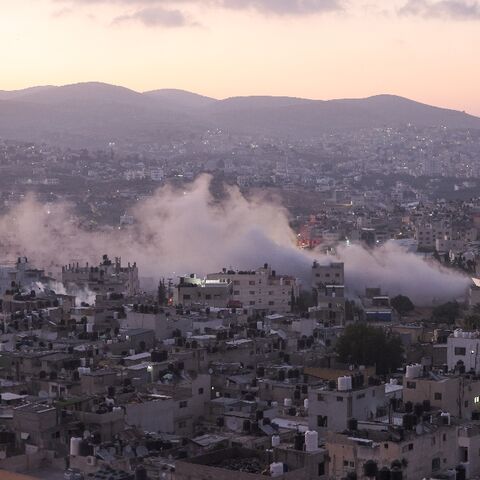Saudi Arabia’s property market is seeing a “steep decline” in demand for large houses as more young Saudis move out of their family homes earlier to seek jobs elsewhere, according to estate agent and property consultancy Knight Frank.
Knight Frank is tracking around 555,000 residential units that are under construction in the kingdom and are all due to be developed by the end of the decade. The estate agent believes that most of those properties will be priced north of $1 million.
In an interview with Al-Monitor, Faisal Durrani, partner and head of Middle East research at Knight Frank, outlined some of the main trends the firm has been seeing in the Saudi property market.
“There's a lot of shifting market dynamics at present,” Durrani said. “We've got a relatively young population — 56% of the Saudi population is below the age of 35. And what we're seeing is a deep decline in household sizes because younger Saudis are moving out of their homes earlier.”
“So we're seeing a decline in multigenerational family living, and they are moving around the kingdom. They're migrating internally in search of better career prospects,” he added.
Durrani said that Knight Frank is seeing a growing demand for smaller- or medium-sized properties as opposed to larger ones.
“In parallel with that, a large proportion of the young Saudi population has been educated overseas. They spend time abroad and they know what they want. They are looking for community-style living, just like you have in any other country in the world,” he noted.
Developers are responding to that by increasing the offering of their residential areas by making them close to schools, mosques, gyms and restaurants, Durrani said.
“People do not necessarily want to drive everywhere to get all of those conveniences; they want it within walking distance,” he added.
The Saudi government has set a target of having home ownership at 70% by 2030; right now, that number is mid-60%, Durrani explained.
Over the last couple of years, the government has introduced a raft of measures to facilitate access to debt financing to ensure that more Saudis can get on the property ladder.
But Durrani warned he had seen house prices “increase pretty dramatically” in the kingdom during that time. For example, in the capital, Riyadh, apartment prices have risen by about 50% while standalone house prices have increased by 40%, according to Knight Frank.
As household income has not risen by the same rate, Knight Frank is seeing fewer property sales than before, Durrani said. The result is more vendors shifting their properties from the sales market to the leasing market, which in turn is reducing the number of affordable properties, he said.
Most of the Saudi appetite for buying properties is in Riyadh. Following this are the giga-projects like NEOM or the Red Sea Project, the Knight Frank executive said. The giga-projects are new supercities and economic hubs financed by the country’s Public Investment Fund, designed to boost the kingdom’s status as a tourist destination. The third most preferred destination for Saudis to buy real estate is the holy city of Makkah, Durrani noted.
Durrani said when it comes to giga-projects like NEOM — a $500 billion high-tech economic zone built from scratch and estimated to be as large as Belgium — the No. 1 reason Saudis want to buy property there is because of Vision 2030, which is the kingdom’s strategic framework to diversify its economy away from oil, pivot to sustainability and develop its public sectors including health, education and tourism.
NEOM's coastal location is also another reason Saudis want to buy property there, he added.
Last month, Knight Frank released a report looking into the Saudi real estate market and found that 83% of the high-net-worth GCC individuals surveyed were keen to invest in Saudi property. Some 95% of the high-net-worth GCC individuals said it would be even more attractive if local financing options were available to them.








